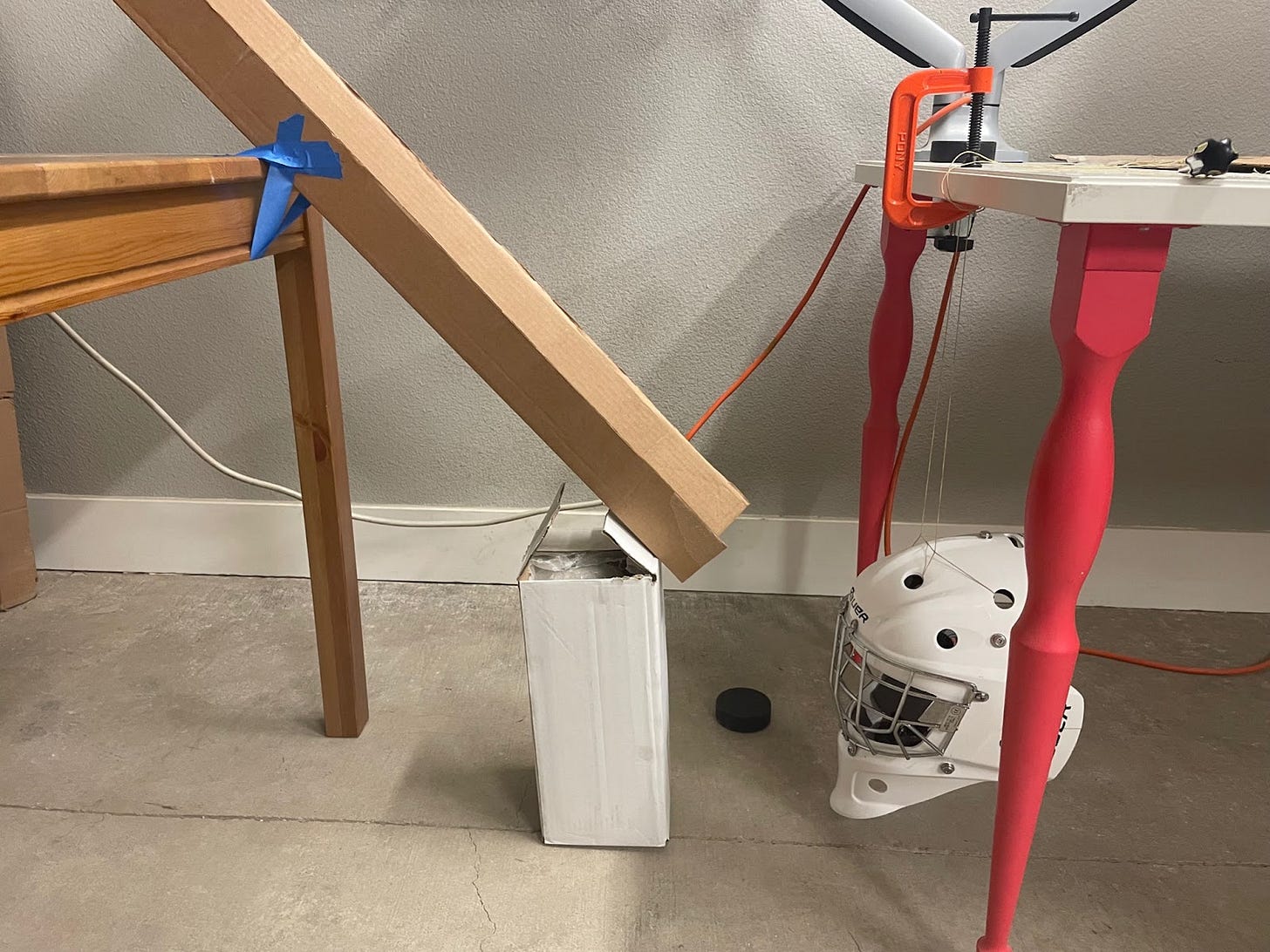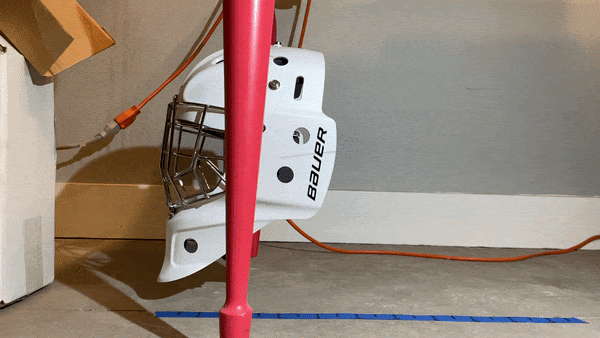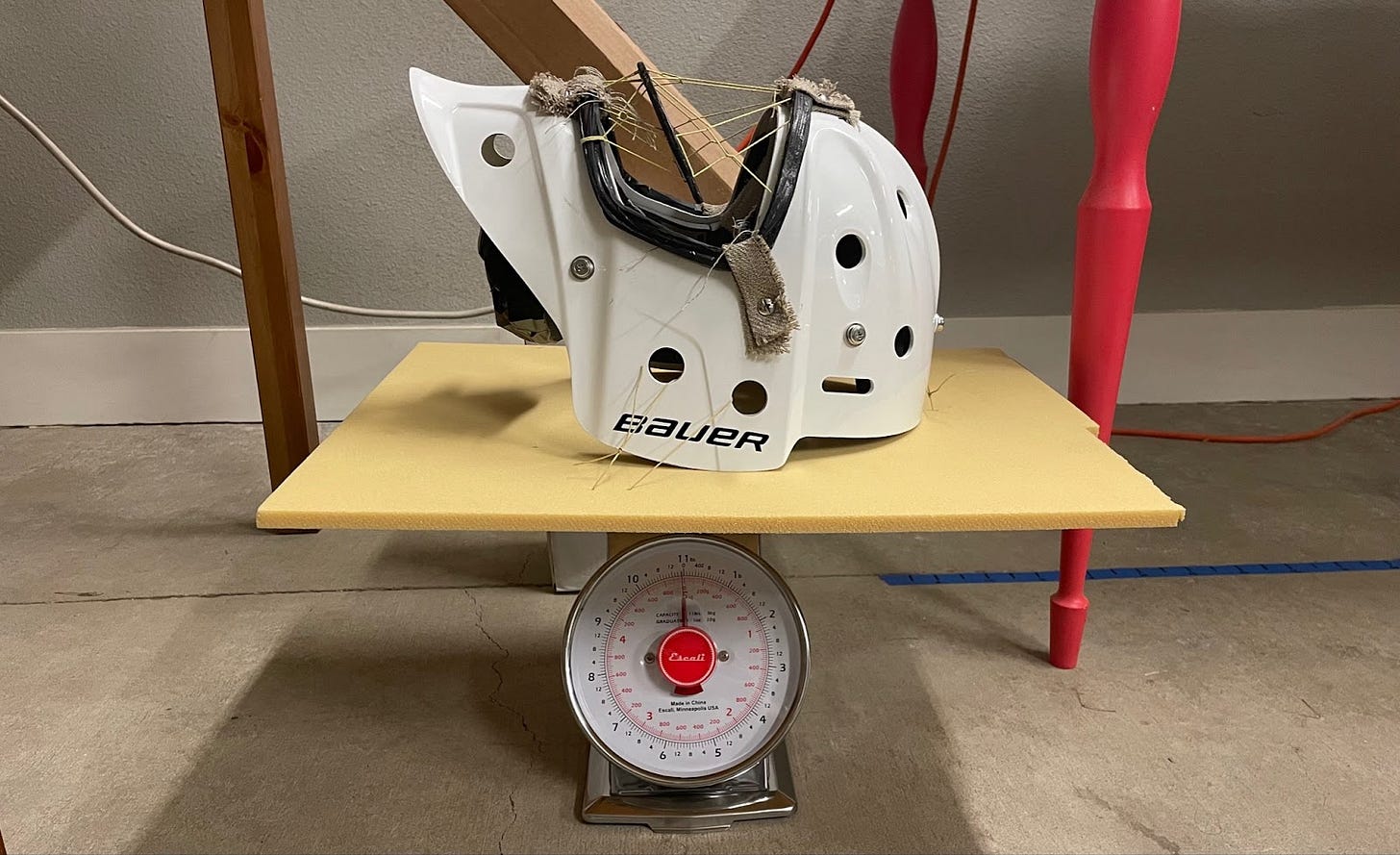An Inventor's Quest for the NHL Pt. 10
Is This the End?
This series follows my attempt to develop a product that I dream of getting into the NHL. Previously on the Quest: Part 1, Part 2, Part 3, Part 4, Part 5, Part 6, Part 7, Part 8, Part 9
I’ve wanted this idea to succeed more than any I’ve had before. I’ve tried my best to bottle up that desire for fear of tempting fate, but it has managed to leak out all the same. Every time I daydreamed about where this could take me — rubbing elbows with NHLers or building my own sports equipment company — I knew I should stop. If things didn’t go as planned, the fantasies of the future would only make failure more difficult on me. It would feel as if the door was closing on a bright and fulfilling future.
And yet, those dreams are the same ones that got me started and the same ones that kept me going. So now, when it looks like I might fall short, I remind myself that the dreams were a good thing because, at least, they carried me this far.
In my last update, I worried that I had accidentally designed something that was less safe for goalies. That, with my Kevlar cage, a goalie would experience higher forces than with a regular metallic cage, leaving him/her more vulnerable to concussions. I devised some tests to see if that worry was valid.
My first test was based on a great suggestion from a reader (thanks Richard!). To see how much of the puck’s energy was being transferred into the mask, I suspended the mask like a pendulum with a string and struck it with a puck. A cardboard chute ensured that the puck arrived at the mask with the same speed each time.
The more energy the mask experienced, the further it would swing back. Since my Kevlar cage was lighter than the metallic one, I added some weight to it to keep the comparison fair.
I know it’s a bit wobbly, but I was convinced that the mask with my Kevlar cage had swung less and, therefore, absorbed slightly less energy. I ran the test a few times and, each time, it looked to me that my cage had a small advantage.
I saw a slight glimmer of hope. Maybe I was wrong to worry after all.
My second test aimed to determine the peak force in each mask/cage combo. At first, I put some balls of putty under the mask and measured how much they flattened after impact. But the process was finicky and the results were inconclusive.
In hopes of a more precise result that would be easier to compare, I switched over to a mechanical kitchen scale.
I dropped a puck on each of the mask/cage combos and filmed the scale in slo-mo on my phone to determine the max force.

As you can clearly see above, the peak force in the Kevlar cage/mask setup was higher. That was not good. I repeated the test over and over and the trend was consistent. From this test, It sure looks like my cage is less safe than a metallic cage.
So, is that it then? Is this the end for this project?
I’m not 100% sure. The evidence from the second experiment looks pretty damning, but the first (pendulum) and second (kitchen scale) experiments don’t make sense together. Let’s look at the impulse equation again.
The way I interpret it, the pendulum experiment showed that the Kevlar cage + mask had a lower change in velocity than the metallic cage + mask because it swung less. The mass was the same for both, so it would follow that the force * time would have to be lower as well.
But the kitchen scale experiment showed that the force was higher in the Kevlar cage. The only way for both of those things to be true is if the time of the impact is shorter with the Kevlar cage. From looking at slo-mo footage, I know that’s not true. If anything, the time of impact is longer.
You can see why I’m confused. The only conclusion I could come up with is that I set up the pendulum experiment incorrectly somehow. Maybe what looked like lower energy was caused by something else. Maybe it was because of the different weight distributions (remember I added weight to the Kevlar cage to equalize their weights). Maybe it was because the puck bounced off of the Kevlar cage sideways so more of the energy went into spinning than swinging.
It’s harder to see where the kitchen scale experiment could have gone wrong so I’m more inclined to believe those results right now. Considering how much work I’ve put into this, I’m going to try to avoid being too hasty, but my hope (for this project) is rapidly drying up. I’ll give myself another week or few to see if I can get clarity through more experiments or explanations. If I’ve missed something obvious, please let me know — though I might not respond for a few days. I intend to slowly melt into my couch and turn my brain off for a bit.
Merry Christmas, Happy Holidays, Happy New Year and thanks for reading!
Surjan








Hey Surjan, having a blast reading through your iterative design process on this neat project! Reminds me of a similar project I envision in college for "training blades" that could be slotted onto regulation ice skates for beginners (highly doubt there is a real need for something like that lol)
Really cool to see how some seemingly simple experiments can give you unintended results if details are overlooked. I haven't finished the series so these may be answered already; my apologies in advance.
1. I notice the puck in the pendulum setup is rolling down the ramp. Excuse my limited hockey knowledge, but do pucks usually fly "flat" or is tumbling common?
2. The puck on the kevlar cage pendulum drop seems to almost "enter" the cage and land on the crossbeam, thereby partially and momentarily transferring some of the force vector through the pendulum string. Like you mentioned, rotation could also be a culprit. Maybe a more precise puck release/guide system can provide more control with the impact location on the cage. I assume if the pendulum system is made more robust/repeatable, it will only confirm the results from Setup #2.
Keep sharing because this is awesome!
Best, Arvind.